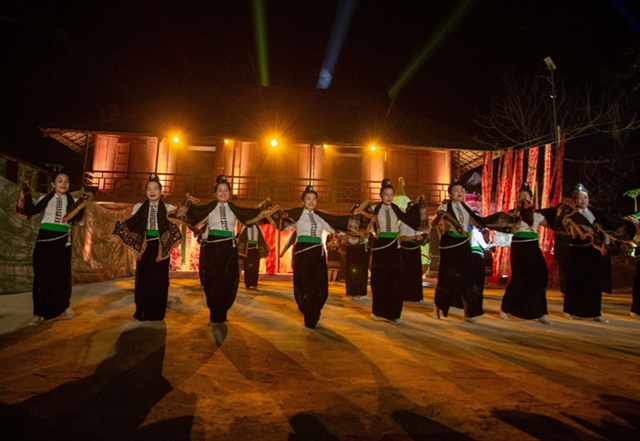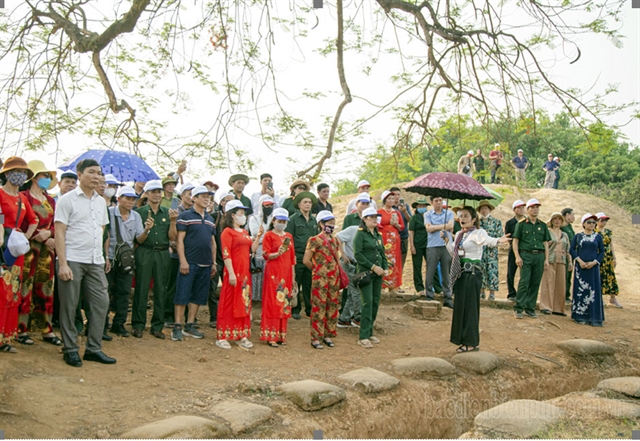 Features
Features

When some storks chose Nguyễn Ngọc Thuyền’s garden to nest in, he made them feel welcome, and they kept coming.
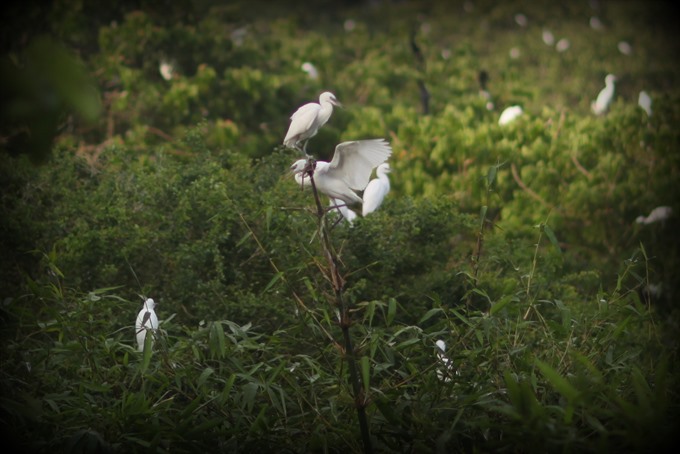 |
| High up: Storks make nests on big trees in Thuyền’s garden. VNS Photo Trần Hoàng Nam |
By Lê Hương
The sun sets gradually, a huge red yolk on the saucepan of blueish clouds.
The fading light envelops vast fields. A light breeze carries the sweet scent of ears of rice, which have turned heavy and yellow with matured grains.
But this most idyllic of scenes is not quiet. The sky is rent with the sounds of hundreds of thousands of birds calling out to each other.
For eighty-year-old Nguyễn Ngọc Thuyền, these are the sounds of music, a concert that makes him happy everyday.
In a way, he is the conductor of this orchestra in Thốt Nốt District, Cần Thơ City, chosen by nature for the role, he knows not why.
“No one knows why the birds keep flocking to my garden,” he told Việt Nam News as he fed a wounded stork that he has been tending to for a few weeks.
He had found the black stork one morning on the ground below a high tree, unable to move. Its flock had flown away in their daily search for food.
One of the stork’s legs was broken. He took the bird home, bandaged the leg, gave it some medicine and has been feeding it everyday till it recovers and flies off to join its kin in the garden.
For the past 30 years, Thuyền has been a guardian to the birds that have chosen his garden as their home in increasing numbers, so much so that he has bought more land to host them.
Of course, a bird sanctuary draws human visitors, too, and his house has become a popular tourism spot in the Mekong Delta city.
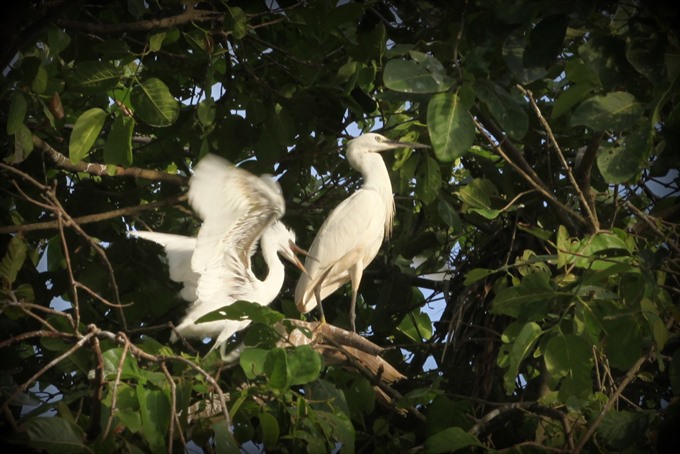 |
| Family practice: Thuyền sees his garden as a maternity hospital for storks where babies are given birth to and nurtured until they are strong enough to fly away. VNS Photo Trần Hoàng Nam |
Thuyền smiled as he recalled how it all began.
“In 1983, hundreds of dark-feathered stocks nested on trees in my garden. After a few months, they left, as suddenly as they’d come.
“But nearly a year later, they returned with dozens of other kinds of storks of different sizes and colours. They settled down here, and their numbers have grown steadily to several thousand now.
“In 1997, the local authorities permitted me to open my garden to tourists.”
His garden was just 2,800sq.m large in the beginning. After the birds nested there, he planted more trees. As more birds began flocking to his garden, he bought more land. His garden spans eight times larger to 22,500sq.m now.
Good for everyone
“When I saw the first baby storks born on my land, I thought I should do my best to protect them. I thought it would benefit everyone.
“More and more birds would eat harmful insects, which can help reduce the use of chemical fertilisers. It would be good for local farmers and the environment.
“When they started coming here in large numbers, I thought the garden can be an interesting tourism destination and increase my family’s income.”
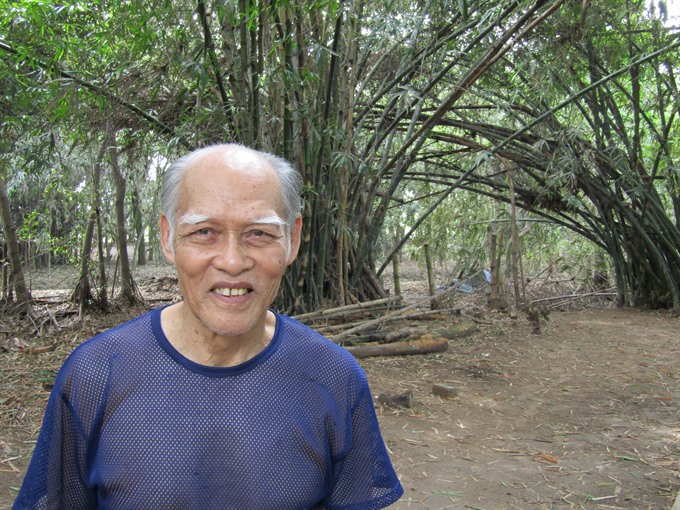 |
| Family practice: Thuyền sees his garden as a maternity hospital for storks where babies are given birth to and nurtured until they are strong enough to fly away. VNS Photo Trần Hoàng Nam |
As his dreams materialised, Thuyền, known locally as Mr Bảy Cò, has become something of an ornithologist.
He can spend hours talking about different species of birds like cò cá, cò ruồi, cò quắm, bạc má, cồng cộc, điên điển and bồ nông, which mostly belong to the stork family, but look different and sport different lifestyles.
He said the birds change their residence every season.
“Storks fly to seek food in pairs or in flocks,” he said, “They find their own food all year round, but during the dry season, I often offer them extra food.
“Now you can see this kind of stork,” he said, pointing to the black stork,” but six months later they will no longer be here. Instead, there will be other birds with different feather colours, legs and beaks.”
Maternity hospital
Thuyền said he thinks of his garden as a maternity hospital for stocks. The birds give birth to babies and raise them up, but when the babies grow up, they fly away and seek homes elsewhere.
“I don’t know where the stork parents are from and where they fly to when they leave my garden,” he said. “I often joke that the maternity hospital is for both domestic and foreign storks. But when the babies grow up, they fly to other homes inside and outside the country.”
"It is good that the birds fly away every season; my garden would not be able to host them if they stayed longer," Thuyền said.
As his garden attracts more visitors, local authorities and banks have stepped in, helping Thuyền get long-term loans at low interest rates to buy more land, plant more trees, dig ponds, widen canals, raise fish and upgrade local roads.
Several thousand people visit the garden every year, but the high season for foreigners is towards the end of the year, Thuyền said.
He charges VNĐ10,000 per Vietnamese visitor and VNĐ20,000 per foreigner.
"Visitors are generally impressed," he added.
“This is my first time,” said Nguyễn Minh Khôi, a teenager from HCM City, “The surrounding scenery is very romantic. It is great to see many storks give birth to babies here. There are a lot of big trees, so this place must suit them.
“However, it’s very difficult to get to the garden. There are no signs to direct visitors. We had to go around asking locals for directions. It would be helpful if signs are installed.”
Huỳnh Hoàng Anh Nguyên, 27, also from HCM City said she was stunned to see the garden attracting so many birds.
However, she was of the opinion that more information displayed about the birds would make the sanctuary more attractive and helpful to children.
One official from the local culture department told Việt Nam News that authorities will continue to support Thuyền in various ways to protect the bird sanctuary.
Despite his age, Thuyền remains busy throughout the day. If he is not talking to visitors, he is planting trees, feeding fish or releasing more snails as food for the storks.
With his family members also engaged in the business now, offering drinks and snacks, helping park vehicles and keeping watch, Thuyền is happy to keep the garden going.
He has a simple message for everyone to keep in mind: “Birds gather in fertile land. And more importantly, they make friends with people who love nature.” — VNS
The address: Bằng Lăng Stork Garden, Thới Bình I, Thuận An Ward, Thốt Nốt District, Cần Thơ City.
The garden is located 60km to the south of Cần Thơ’s City.
From Cần Thơ City, follow National Highway 91 past Ô Môn District to reach Thốt Nốt District, then head for the Bằng Lăng Bridge.
After the bridge, turn left into a small lane (big enough for a four-seat taxi). A xe ôm (bike taxi) is ideal on this lane. The garden is about 2km into the lane.
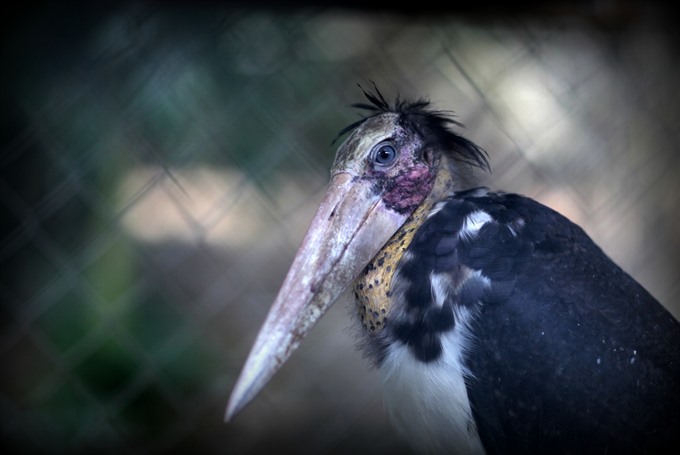 |
| Recuperating: A wounded black stork is being nurtured back to health by Thuyền. VNS Photo Trần Hoàng Nam |
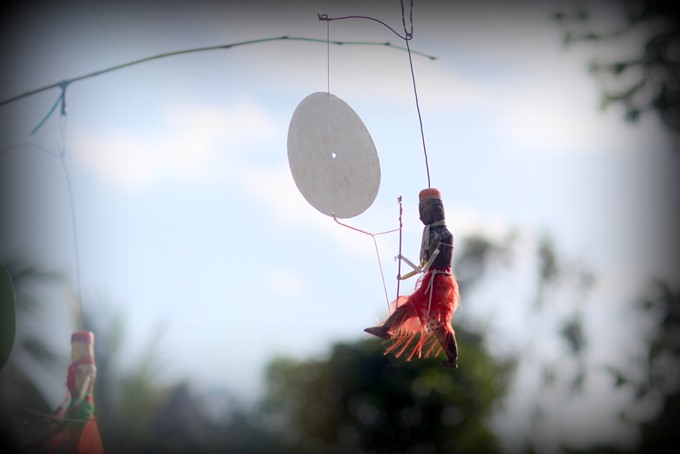 |
| Earth Divine: A bamboo worship toy hangs at an altar đedicated to the God of Land in the garden. VNS Photo Trần Hoàng Nam |
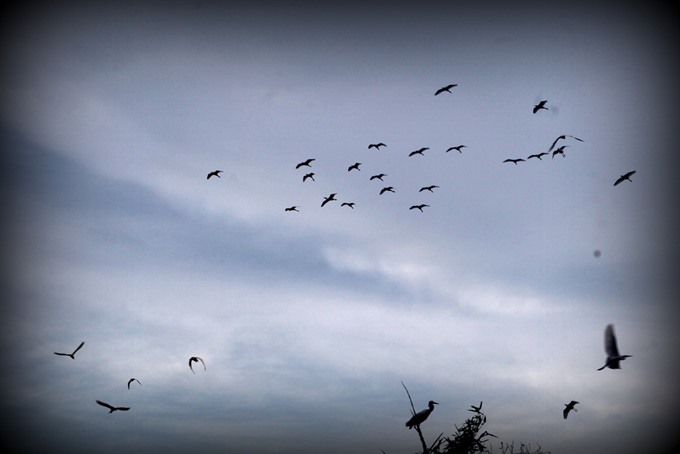 |
| Home to roost: Thousands of storks fly back to Thuyền’s garden every evening. VNS Photo Trần Hoàng Nam |
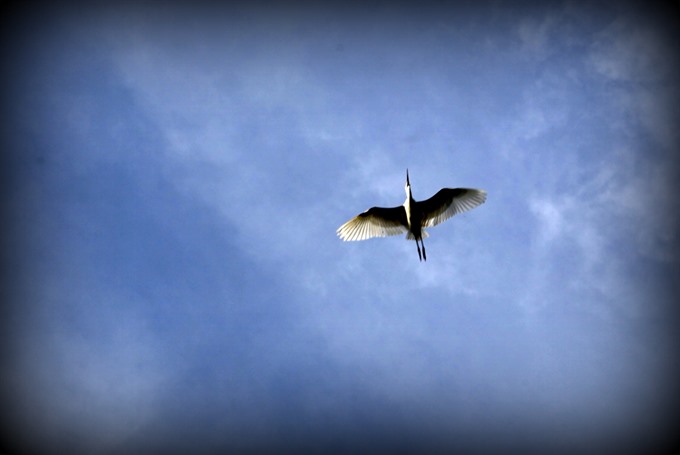 |
| Soaring high: Stocks flying home at sunset offer spectacular views. VNS Photo Trần Hoàng Nam |

